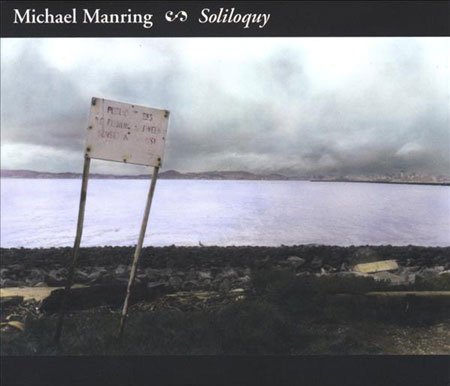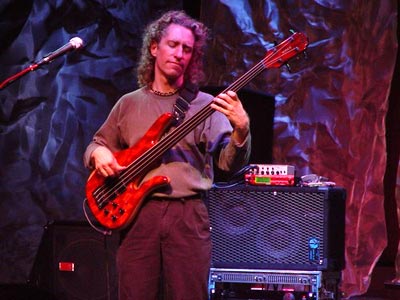Tracks
1. Helios2. Excuse Me, Mr. Manring
3. Solipsism
4. I Left America
5. Greetings, Eathlings!
6. Makes Perfect Sense to Me
7. The Light Which Puts Out Our Eyes
8. A Morning Star
9. Selene
10. Dabuda's Memory
11. When We Were Asleep in the Earth
12. The Orffyreus Wheel
Musician
Michael Manring (Bass)
Two hands. Ten fingers. No overdubs.
Bassist Michael Manring writes in the Extended Notes to his new release Soliloquy [2005 Manthing Music], that he conceptualized the album around the idea of solitude for a number of reasons:
“Solitude is a unique state for us—one in which we are compelled to honesty. It is perhaps the most basic fact of human existence, and yet there’s something mysterious about it. The self is all we truly know, and yet I’m not sure that the self is ever fully knowable.”
And, as a professional musician who does most of work solo, performing on stage, traveling, practicing, composing, etc., Manring has spent a lot of time just considering his own self and solitude. Also, he was intrigued by the idea of doing a truly solo album; just him and his basses, space and sound.
Soliloquy largely succeeds at Manring’s intent: an exploration of space and sound within the environment of the solo bass that envelopes the listener within.
Manring uses a number of specially designed basses in his work (Hyperbass, Hyperbass/Hybrid, 5-string acoustic bass, 10-string prototype, and the vb-4 prototype. Each bass has its own sound rewards and colors and the result is an album with which Manring seeks to establish and explore different “tones” throughout.
“I’m fascinated by the enormous wealth of timbre the bass has to offer and I hoped to capture a bit of its versatility on this disc. I wanted each piece to have its own sonic world…”
By using his mix of fretless and fretted basses, alternate tunings, special microphone staging, different pickups, an E-bow, judicious use of reverb, and other studio sound techniques, Manring has gone for what he describes as trying ”to obtain the same kind of sonic space that solo recordings of acoustic instruments have.” He states he was trying to counteract the normally one-dimensional sound of the bass by trying to pick up the “sound” around the bass itself, to add a spatial element to his music.




